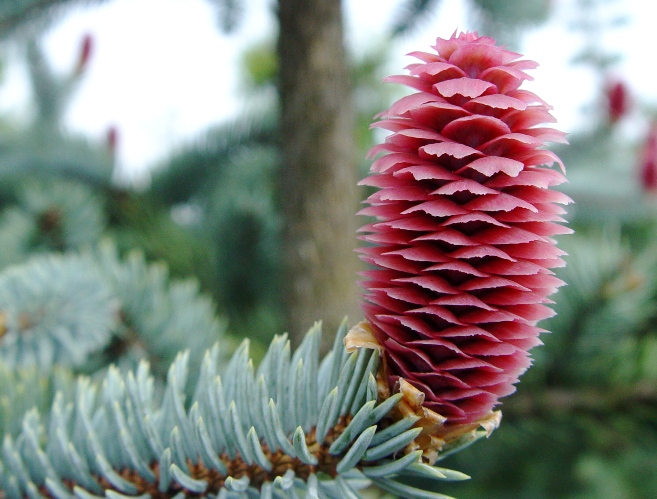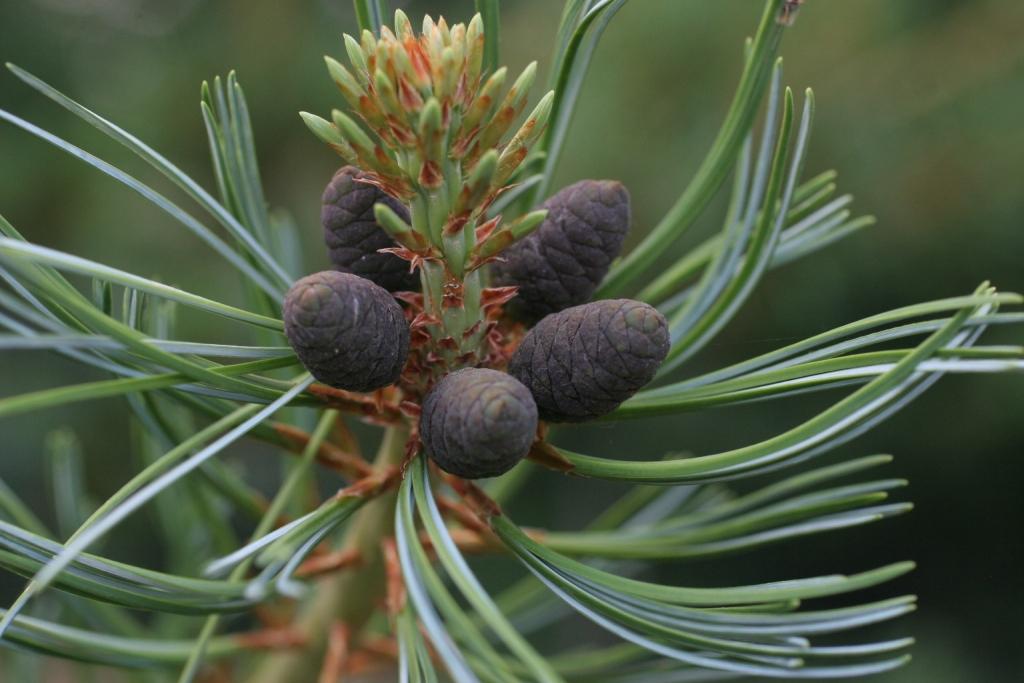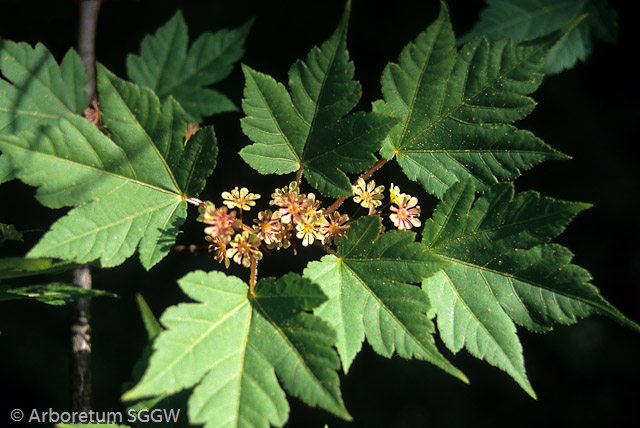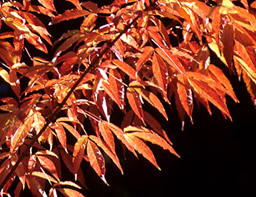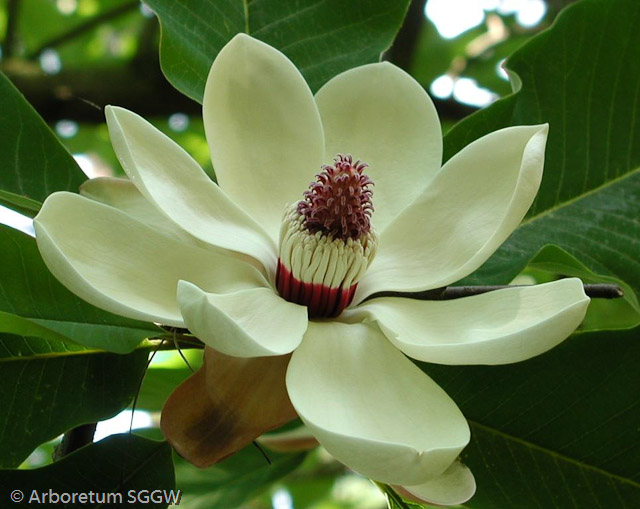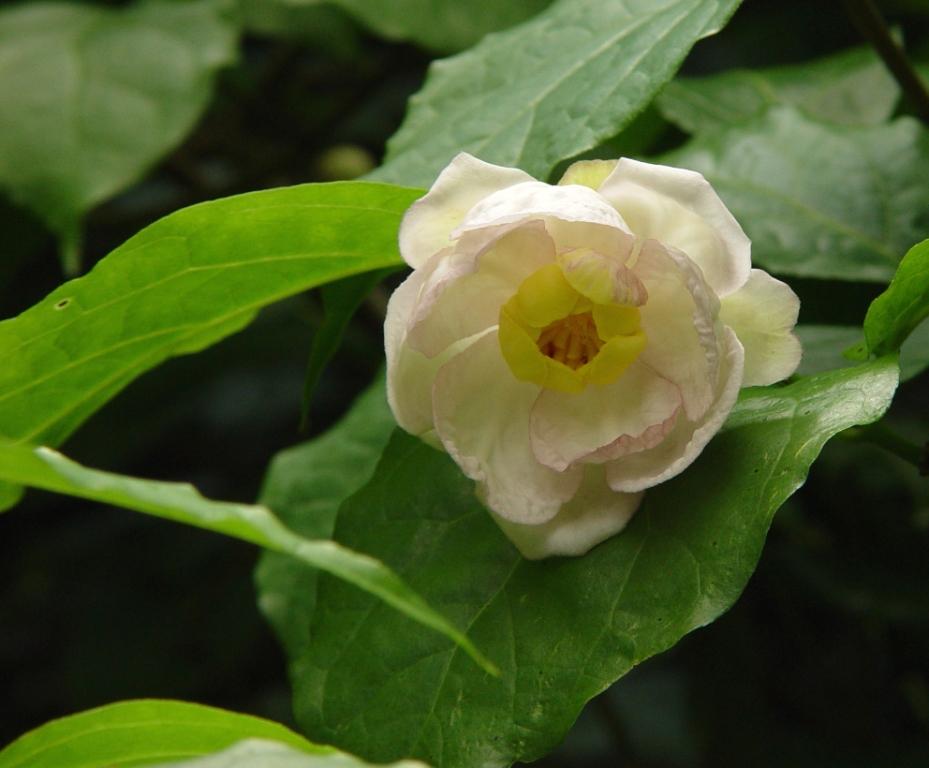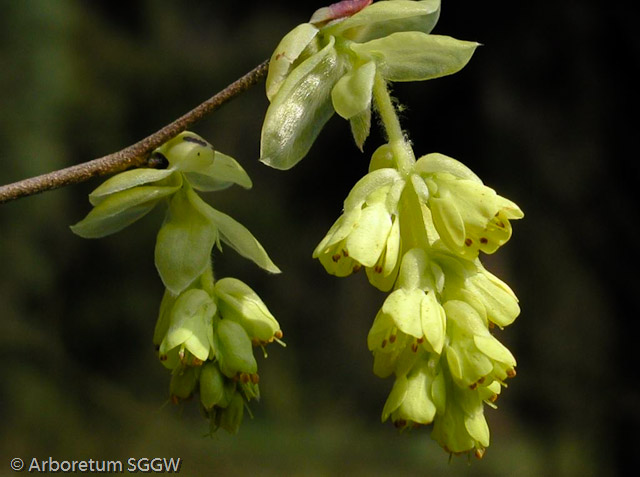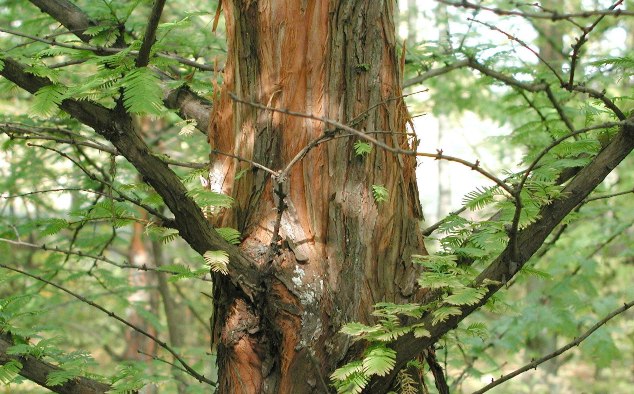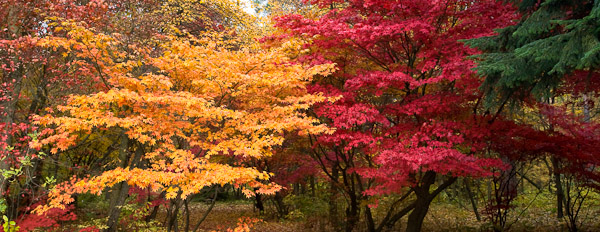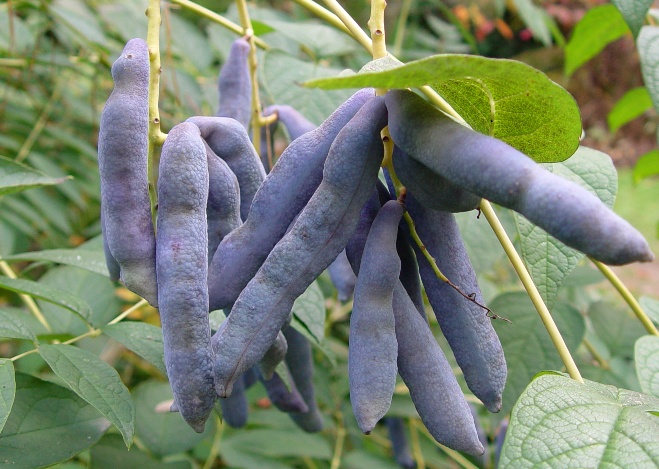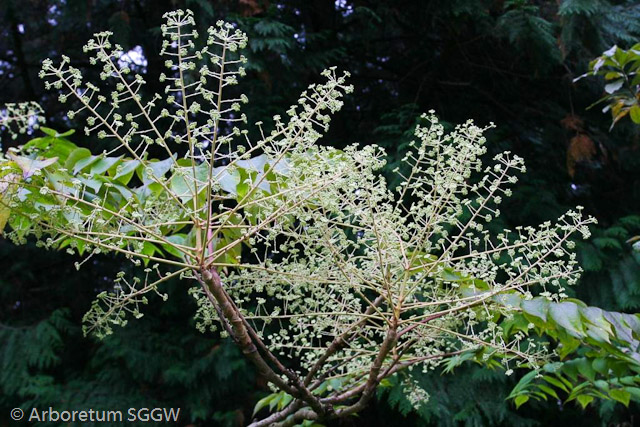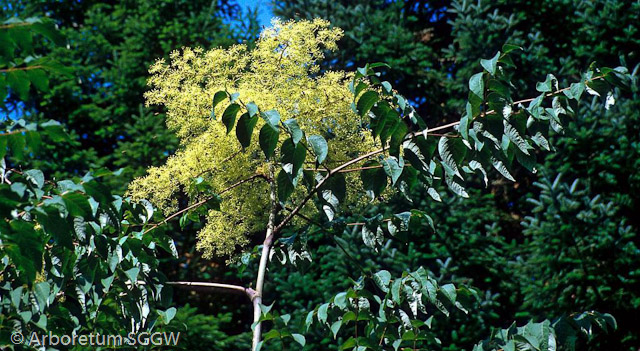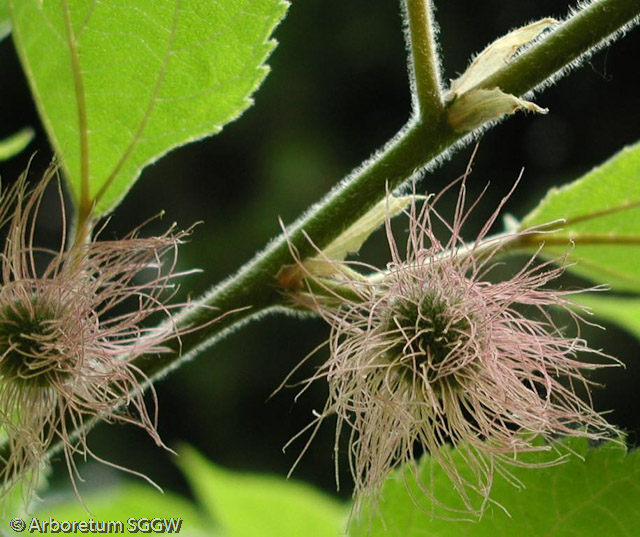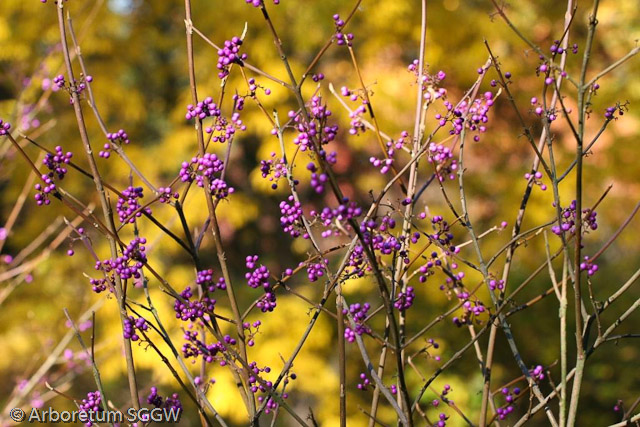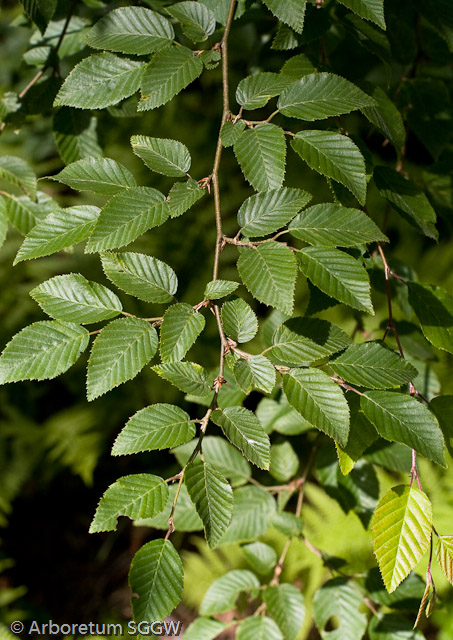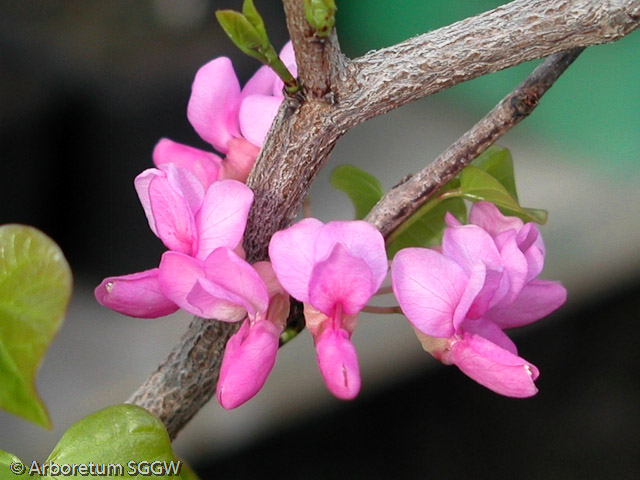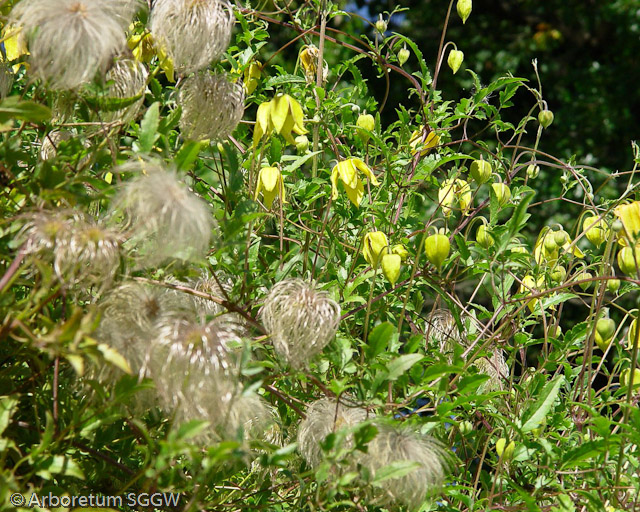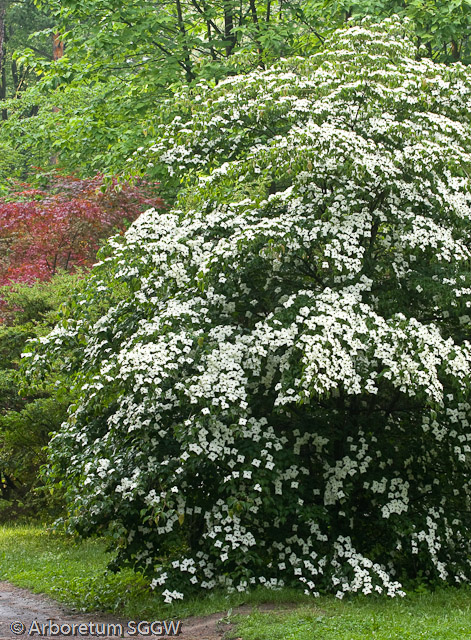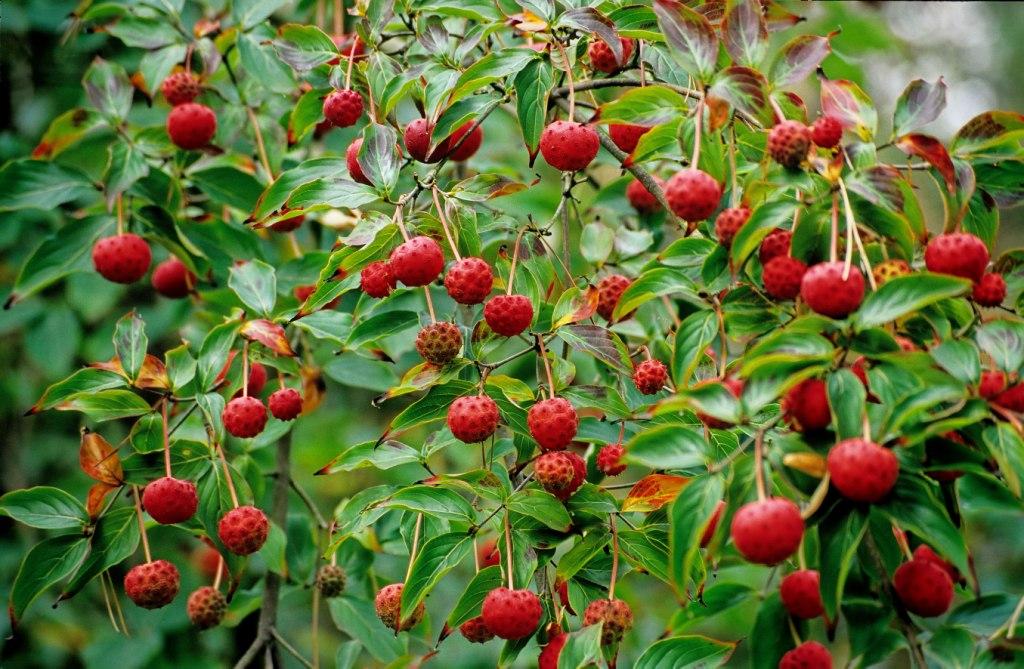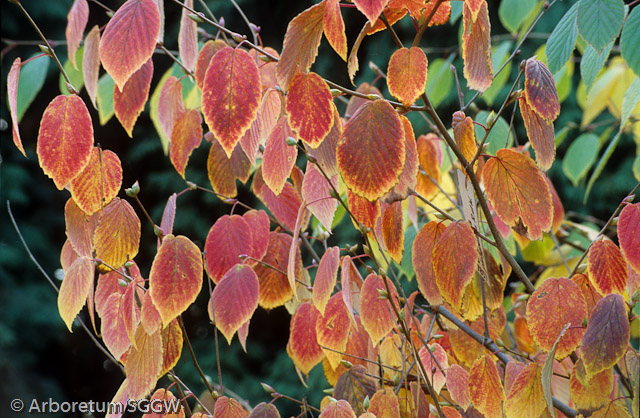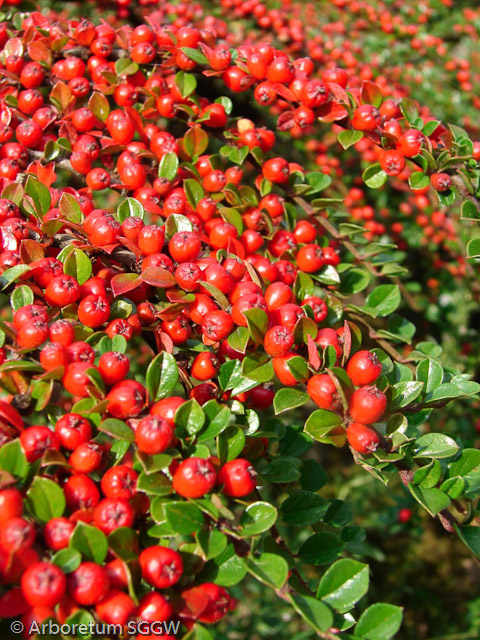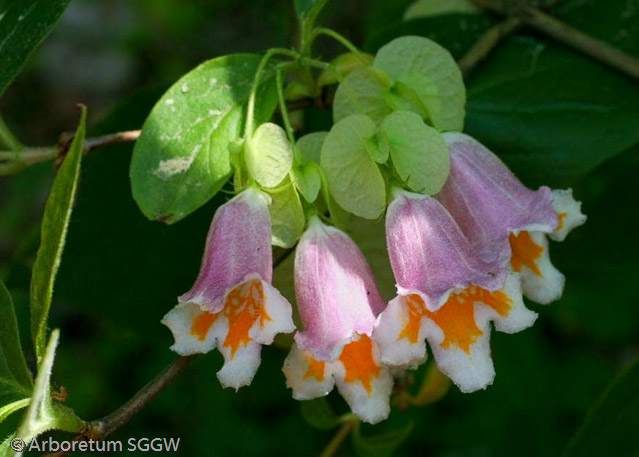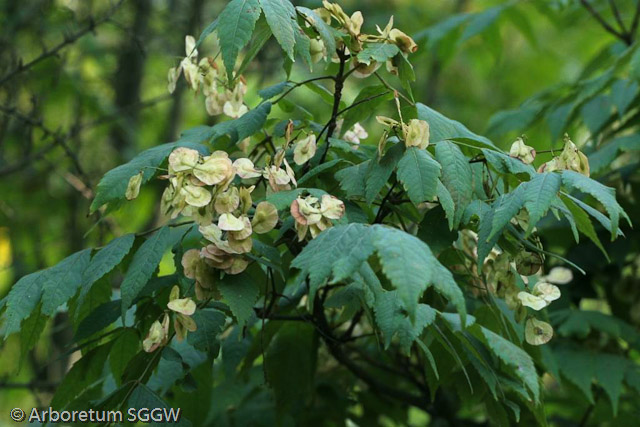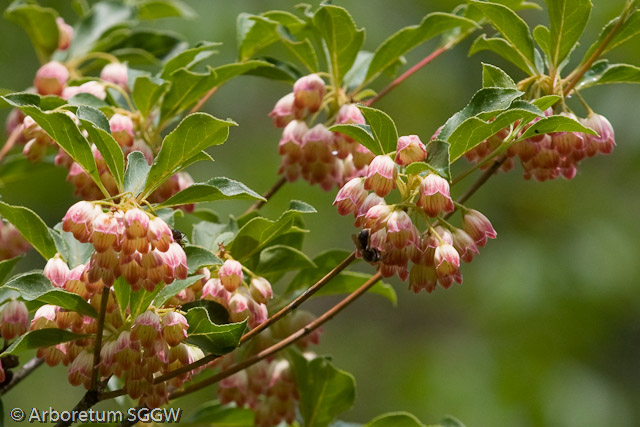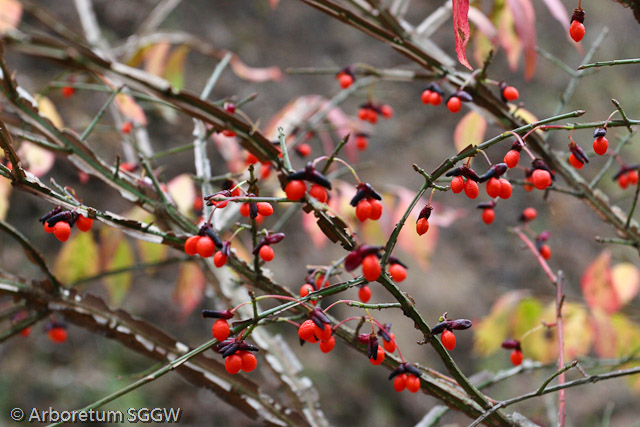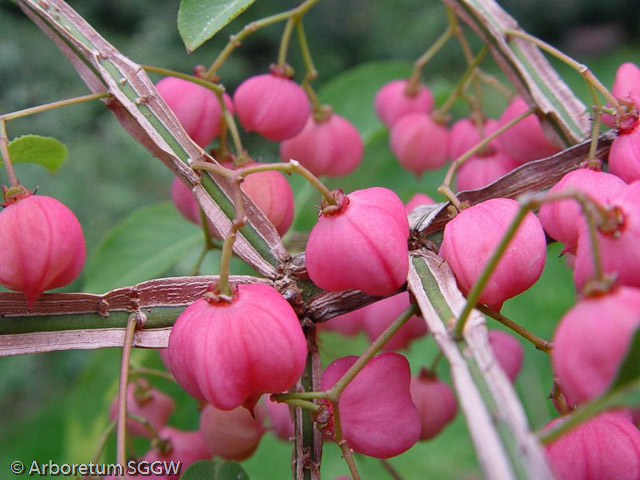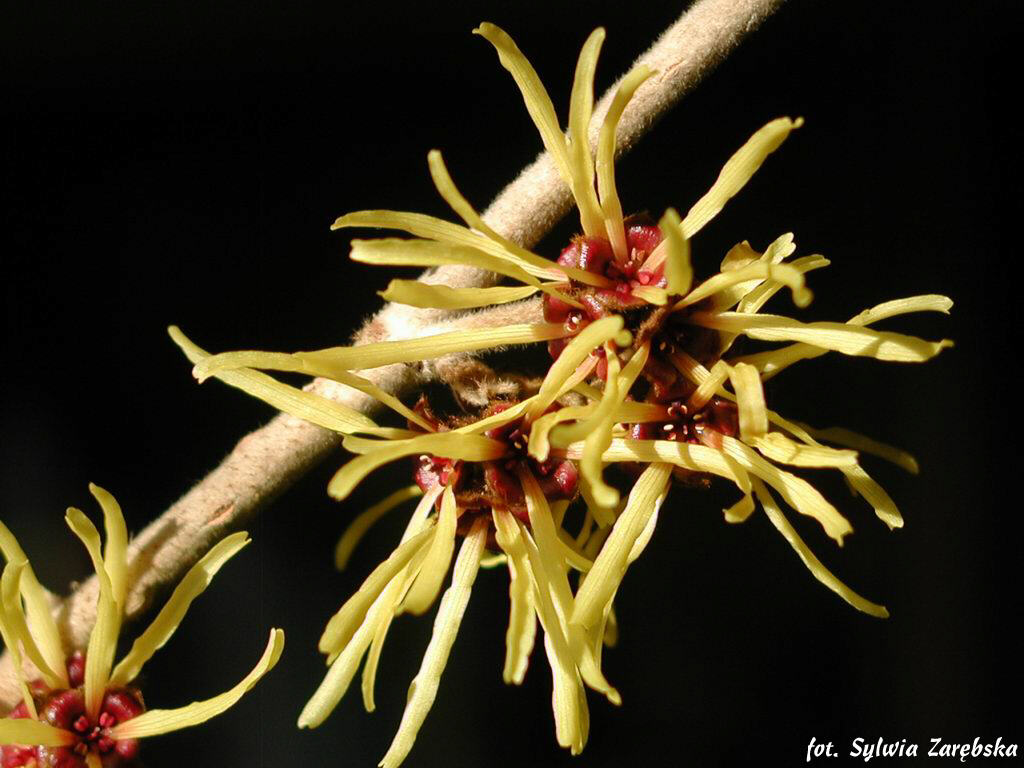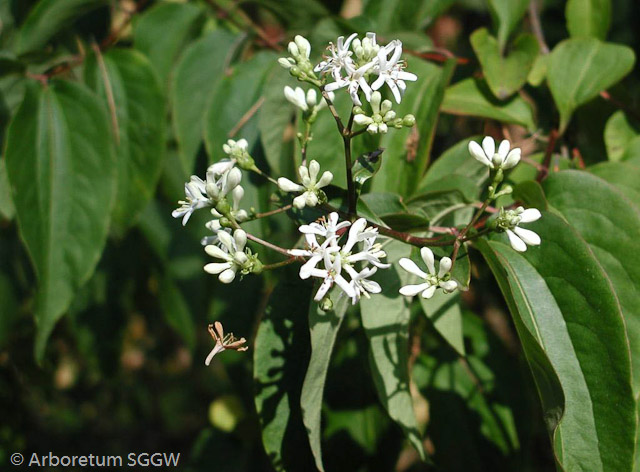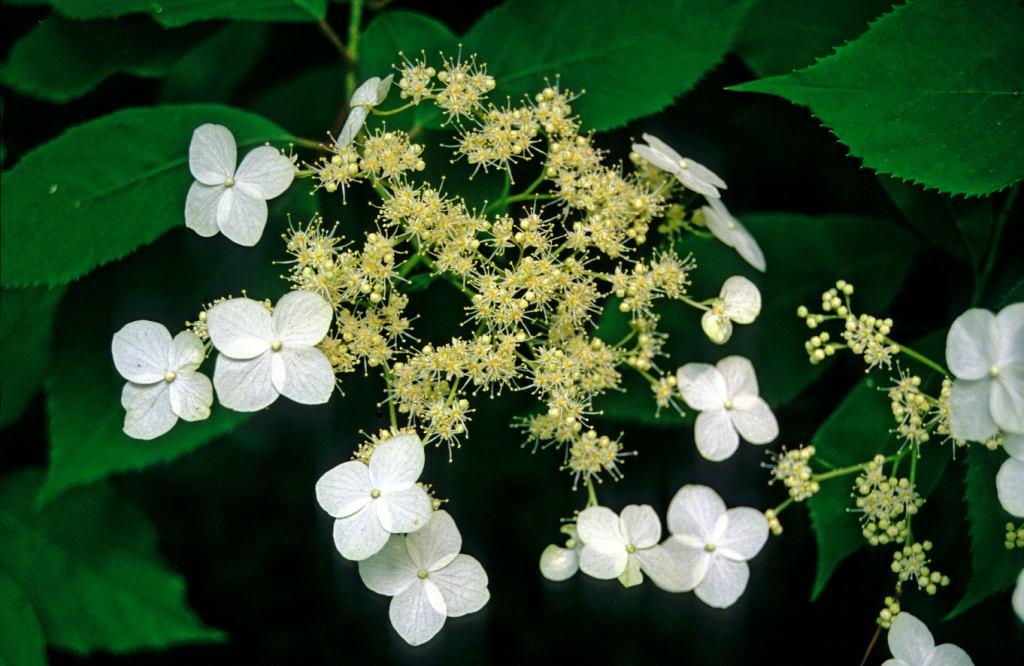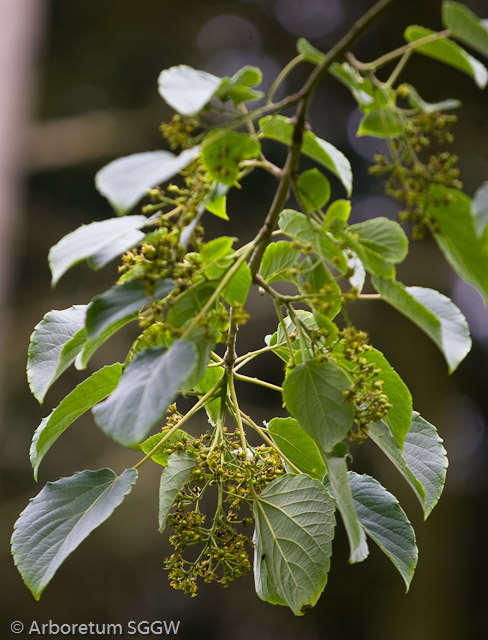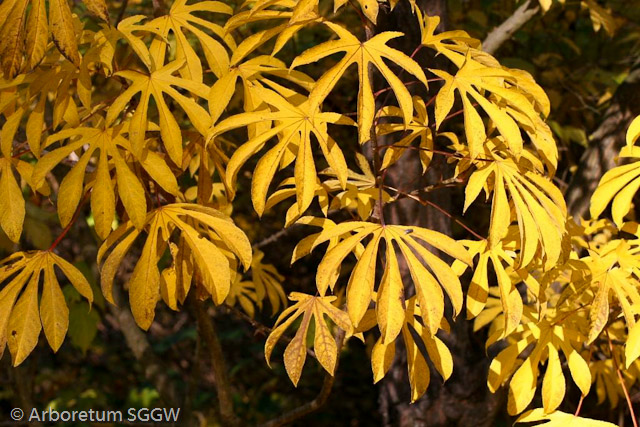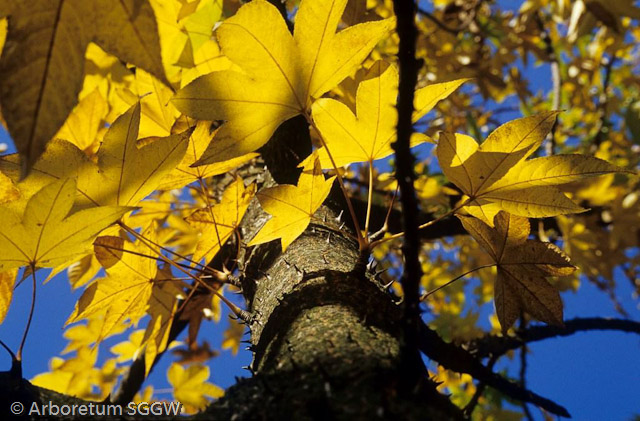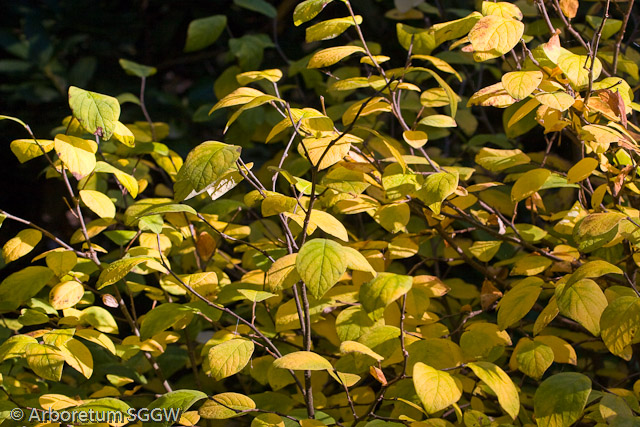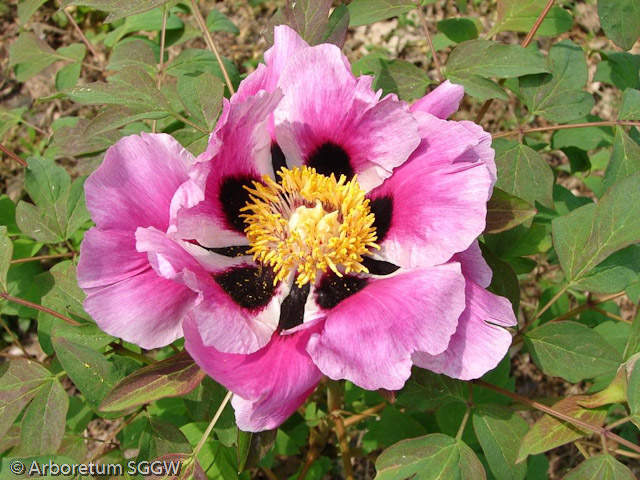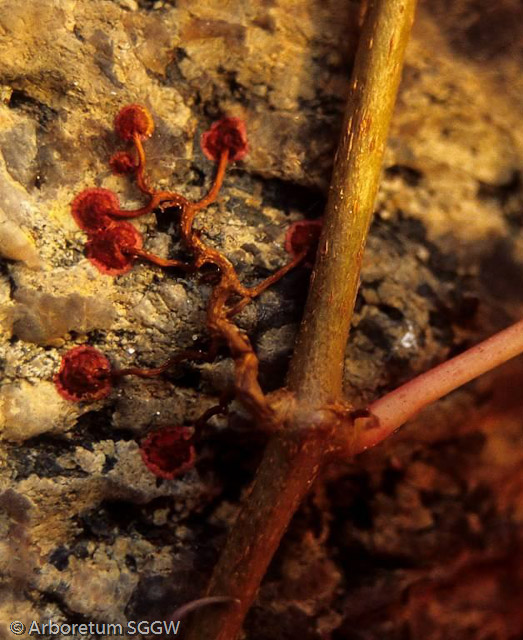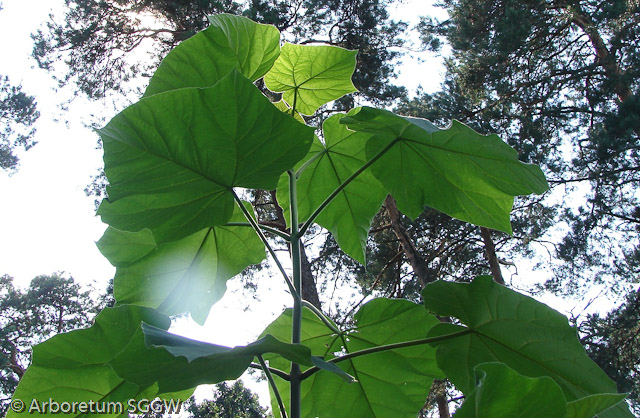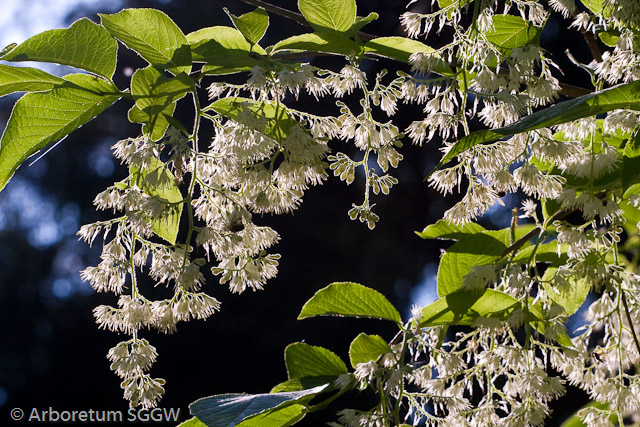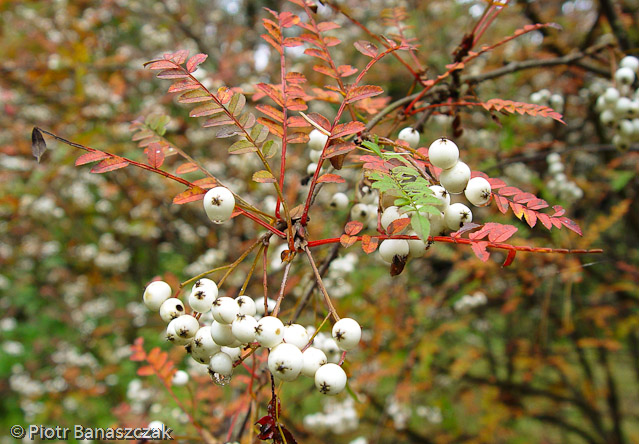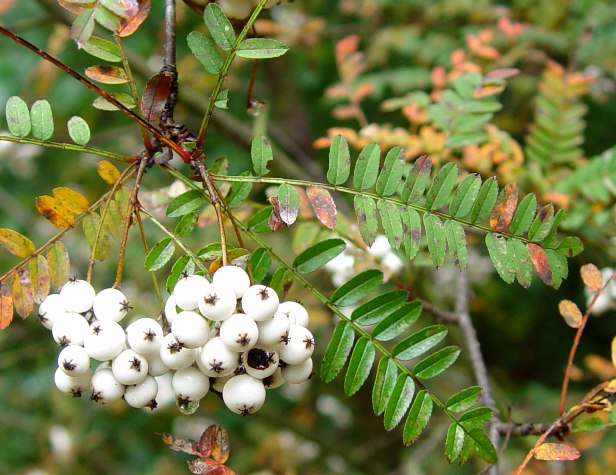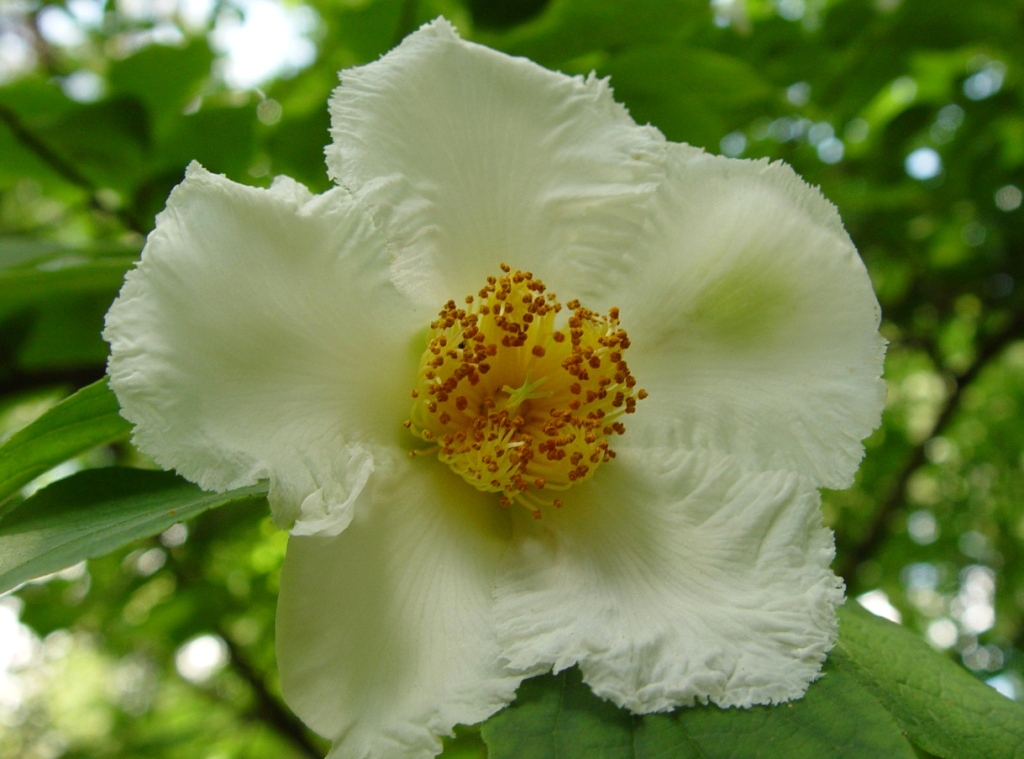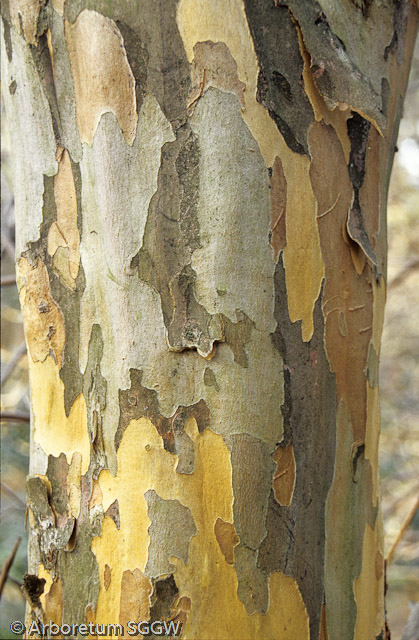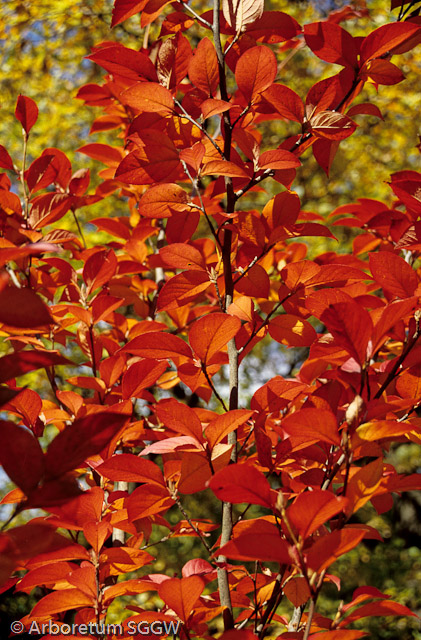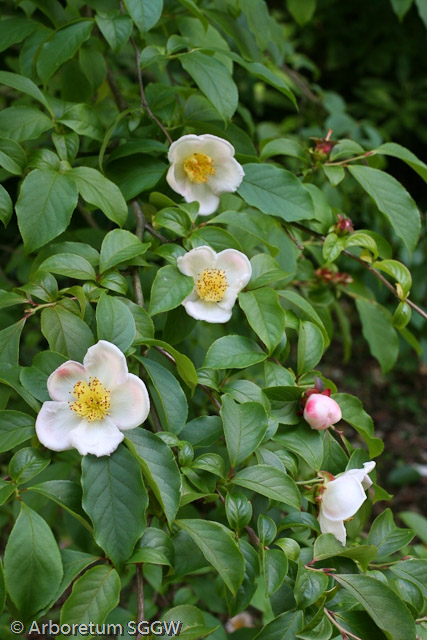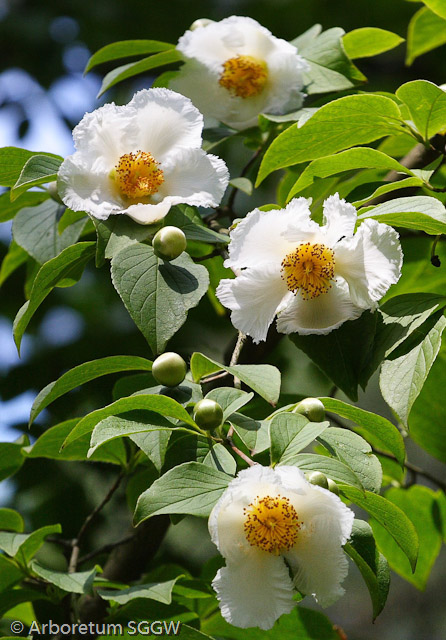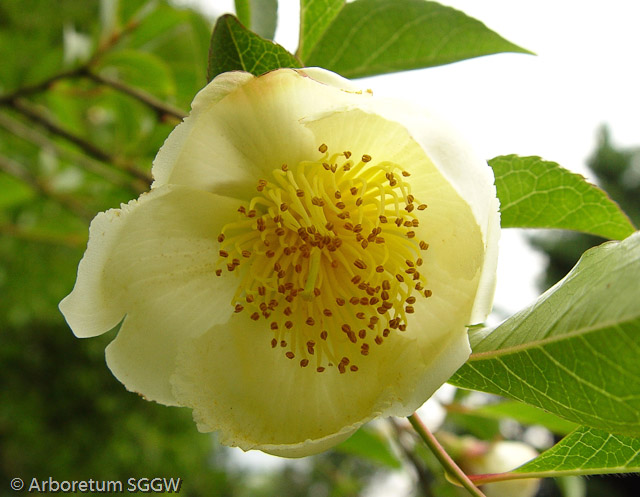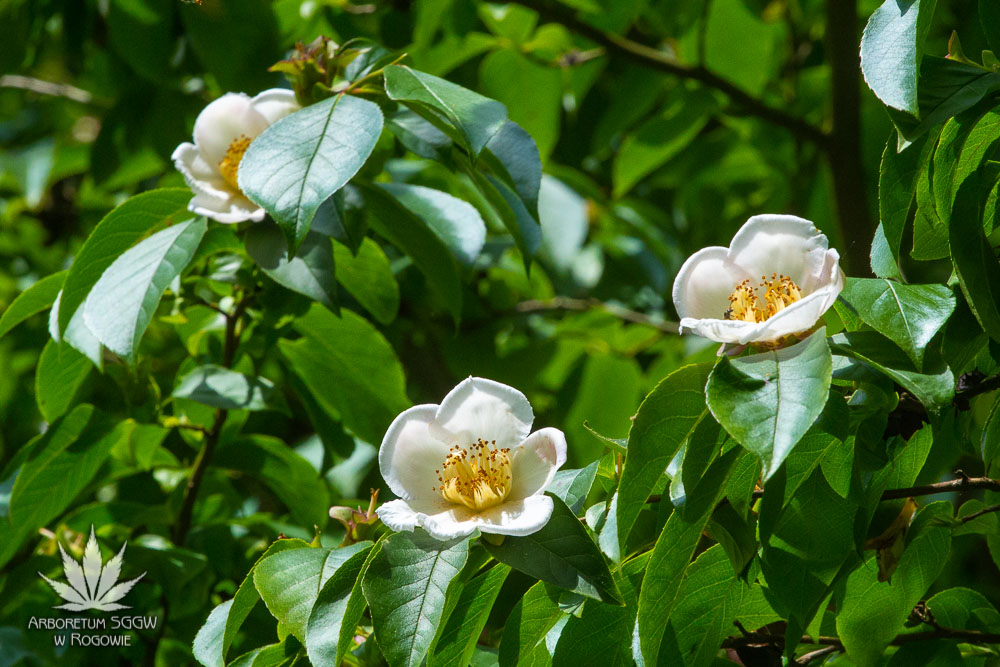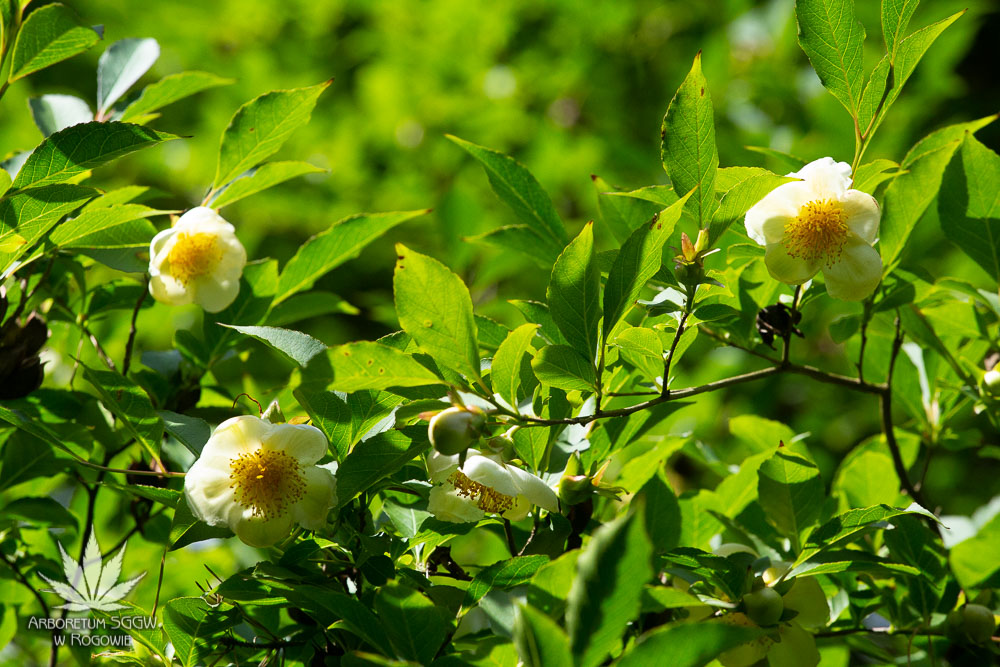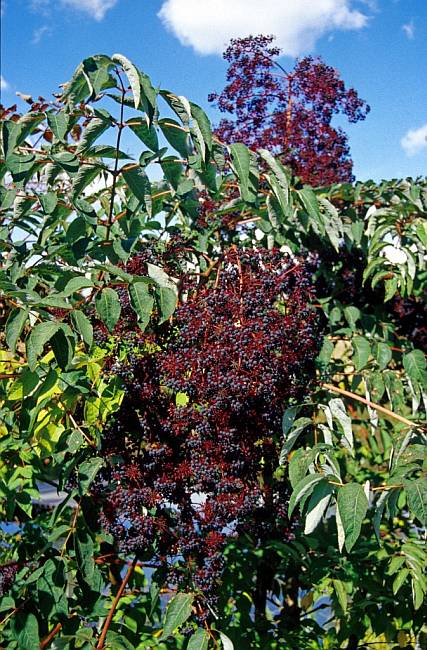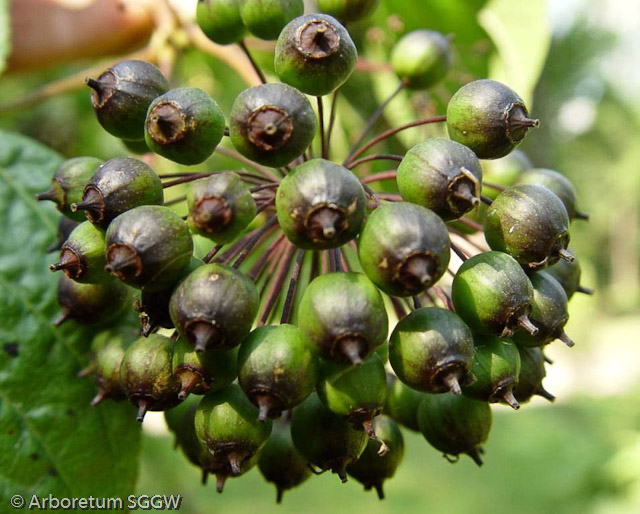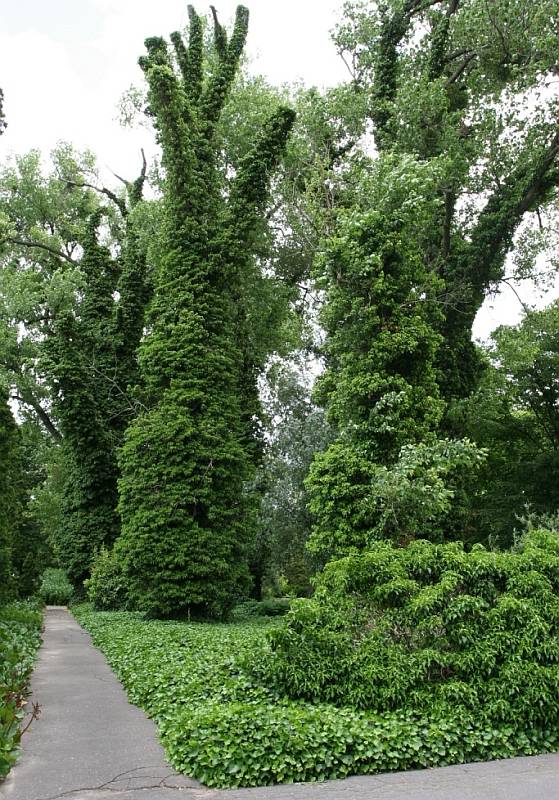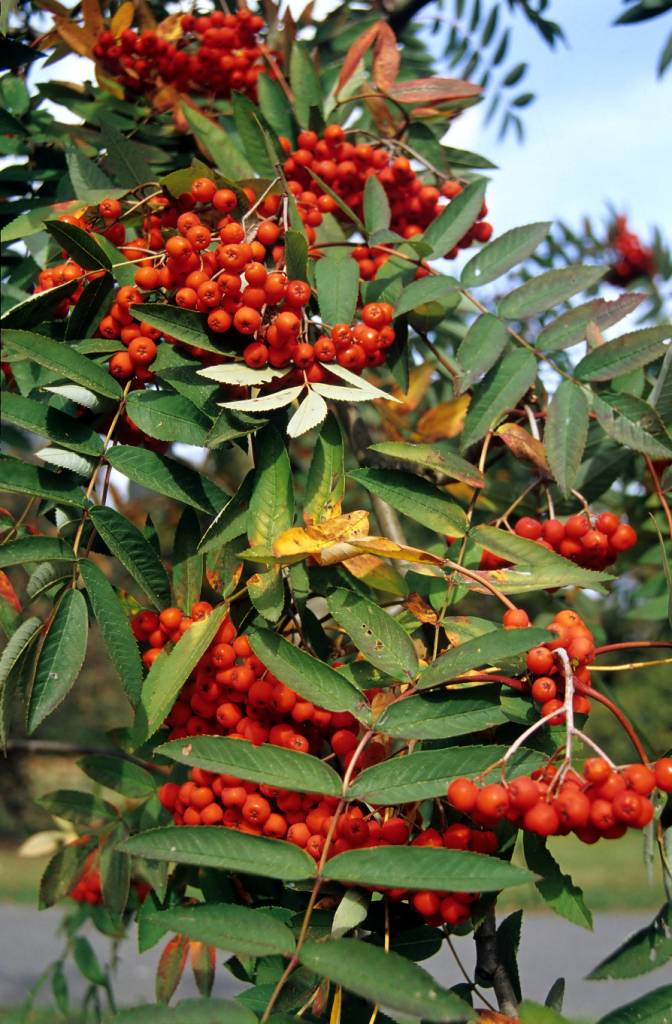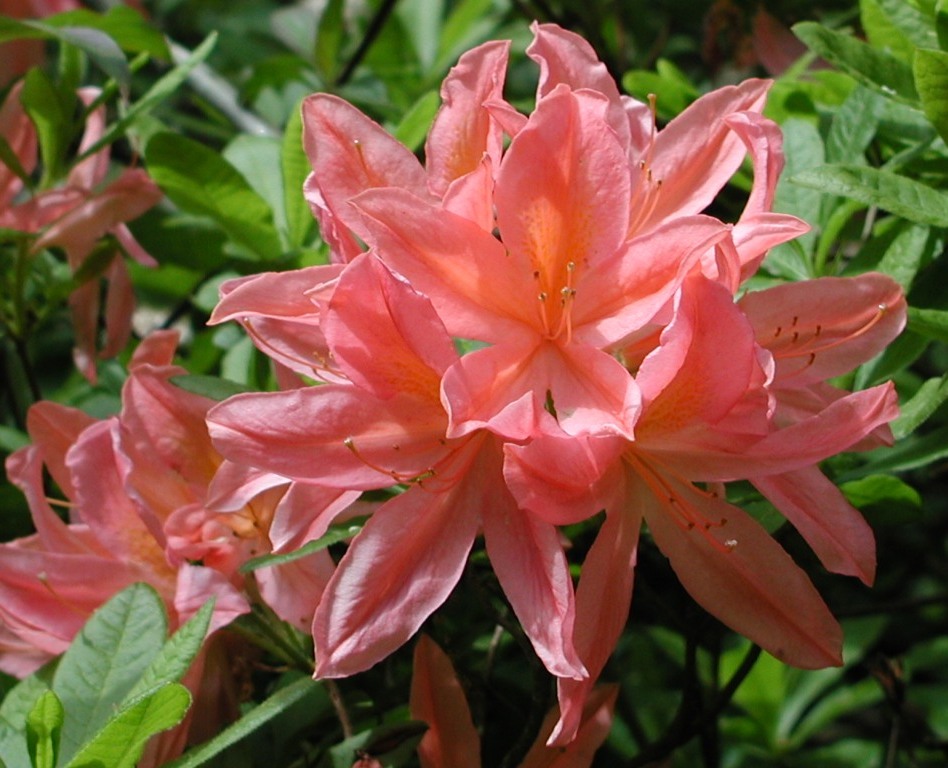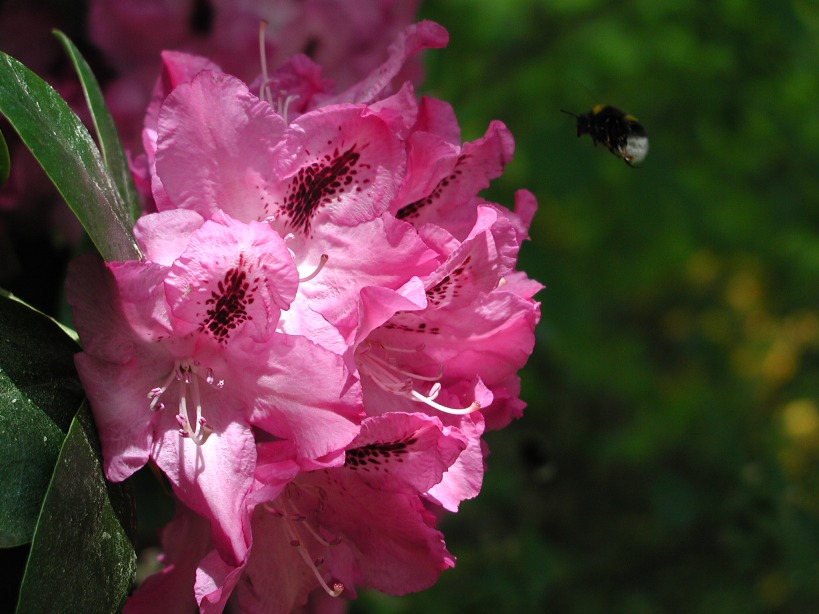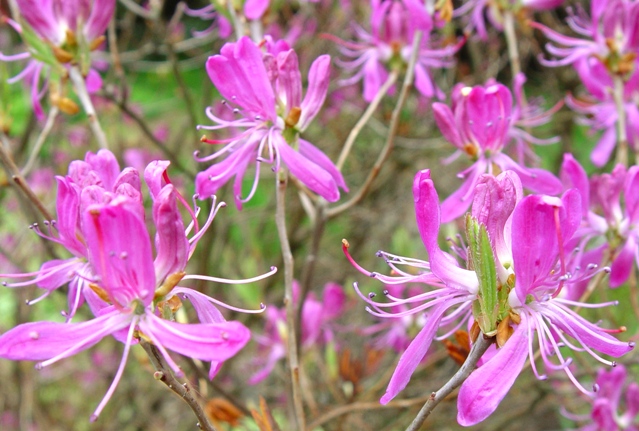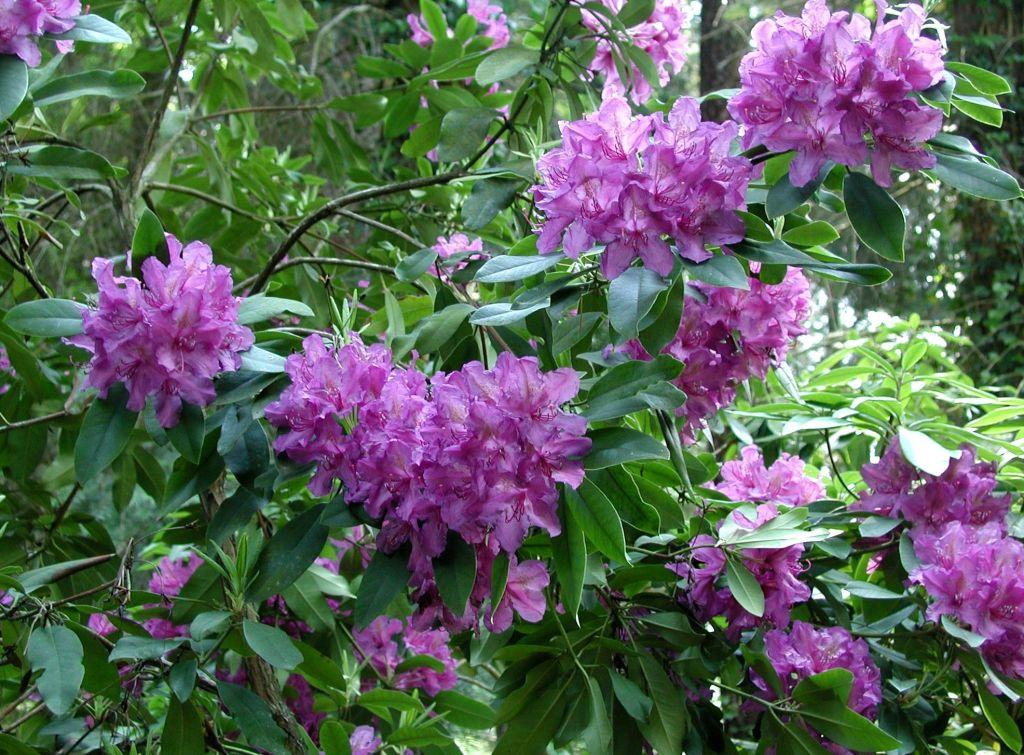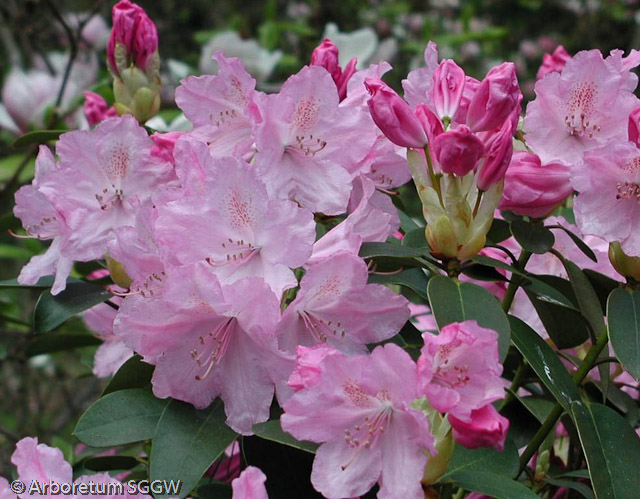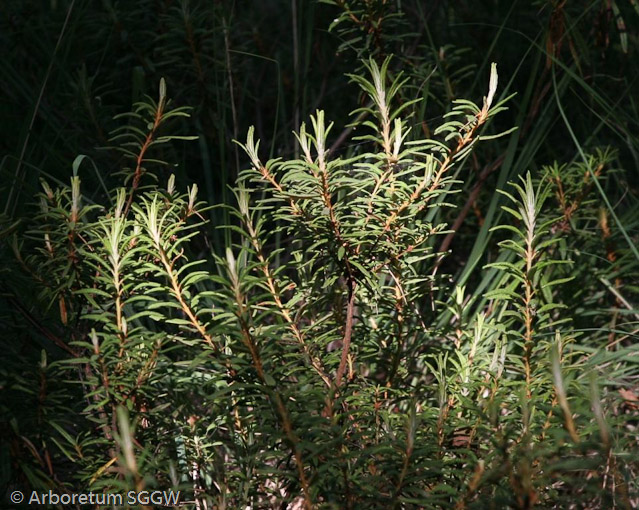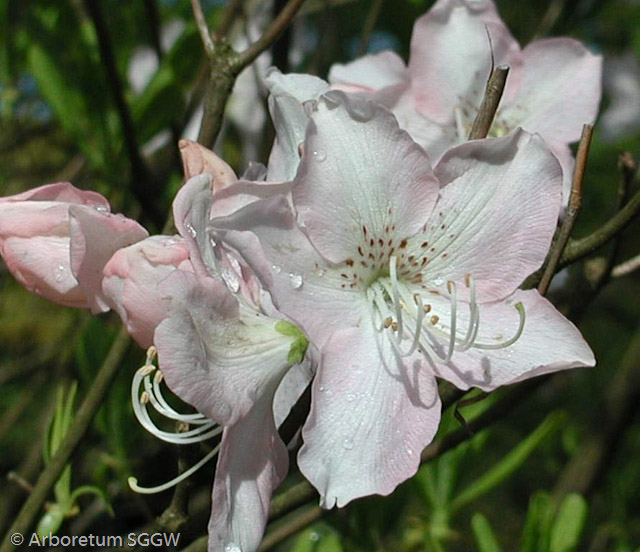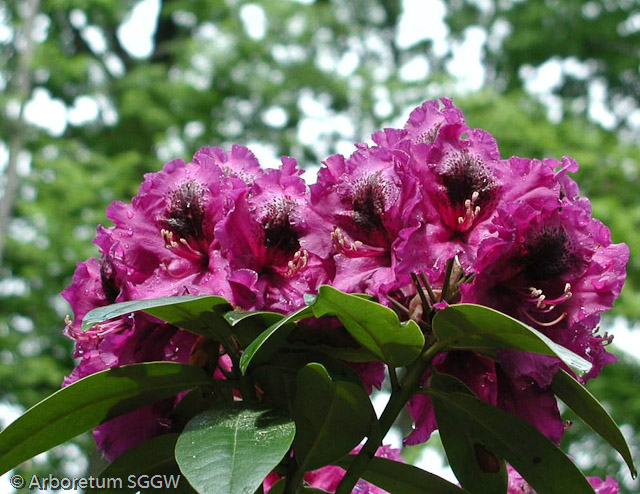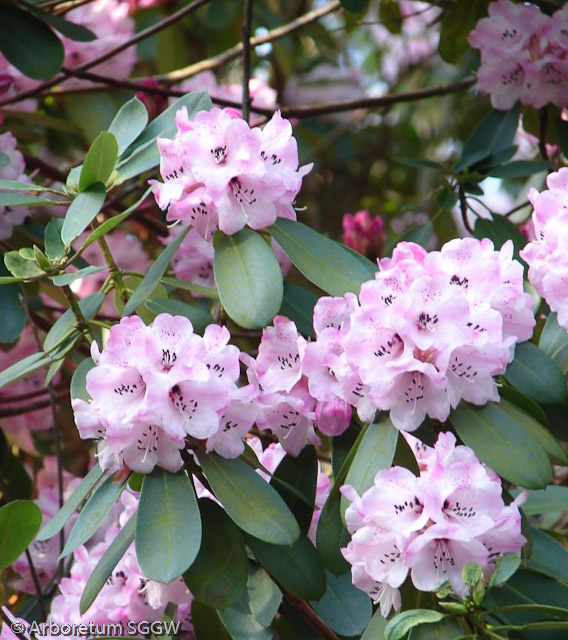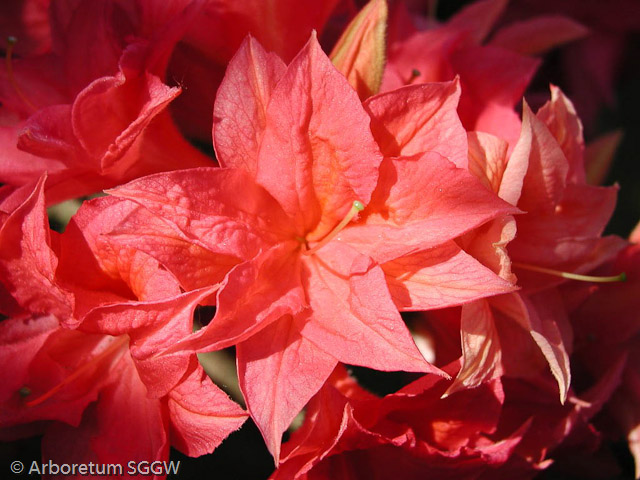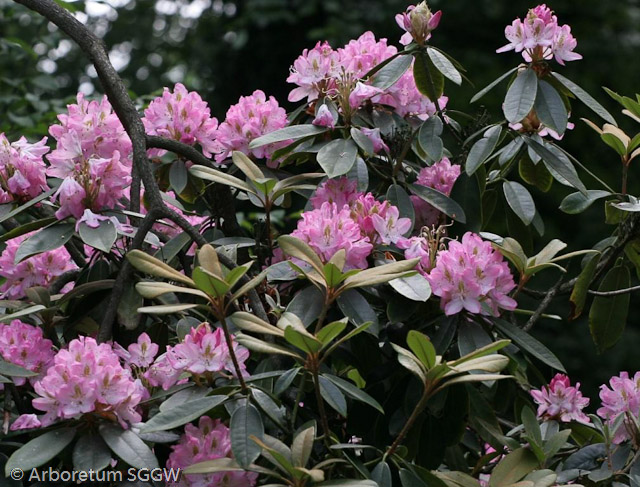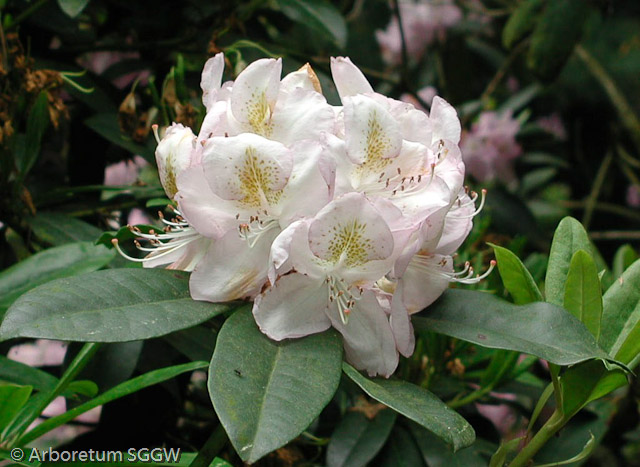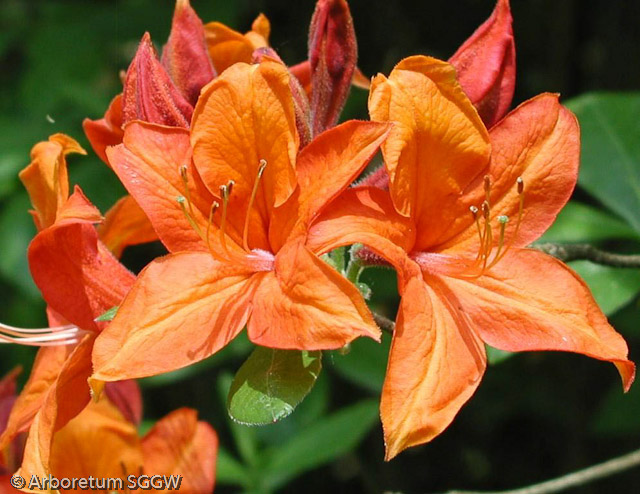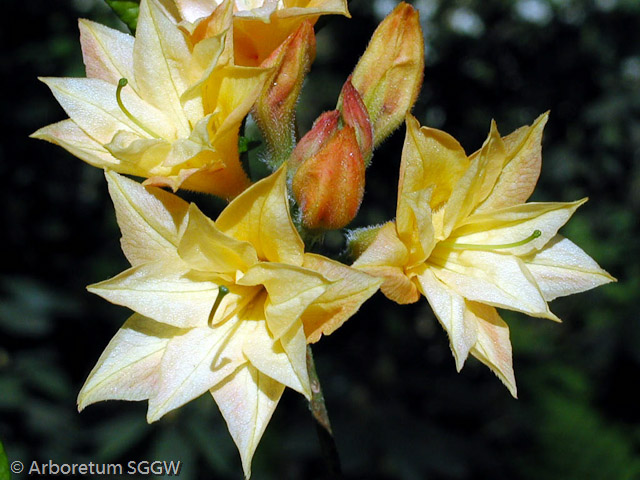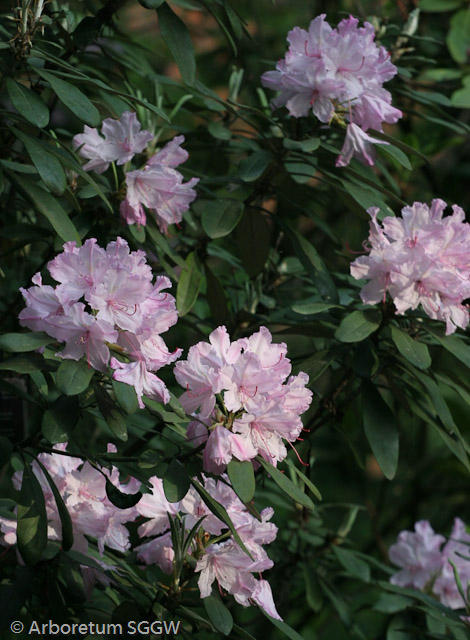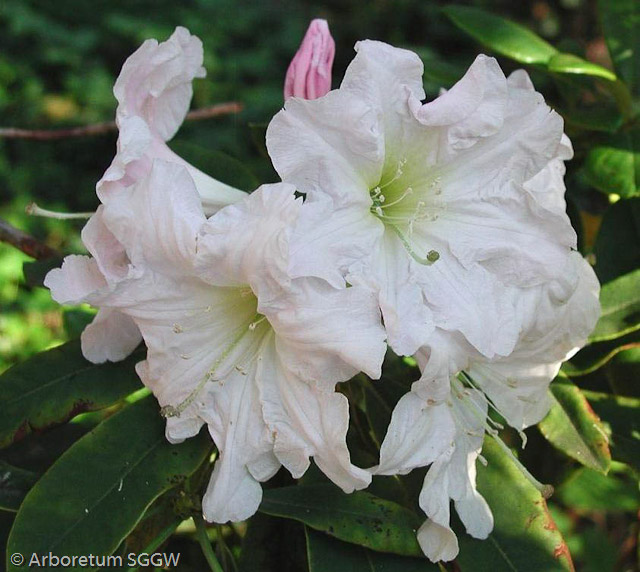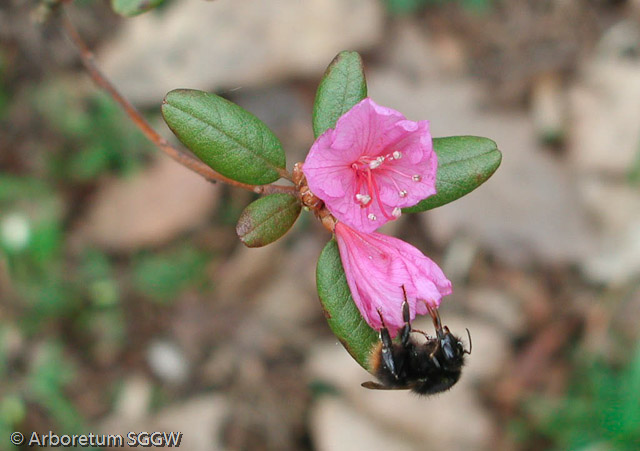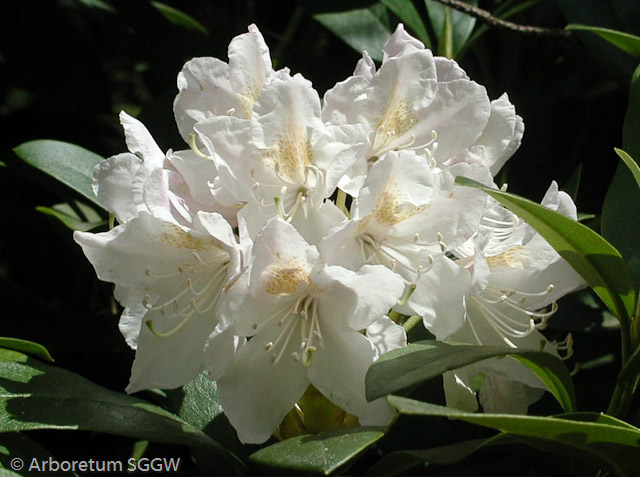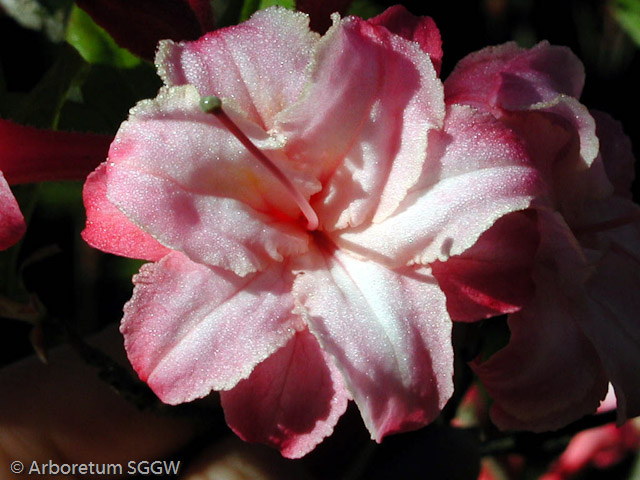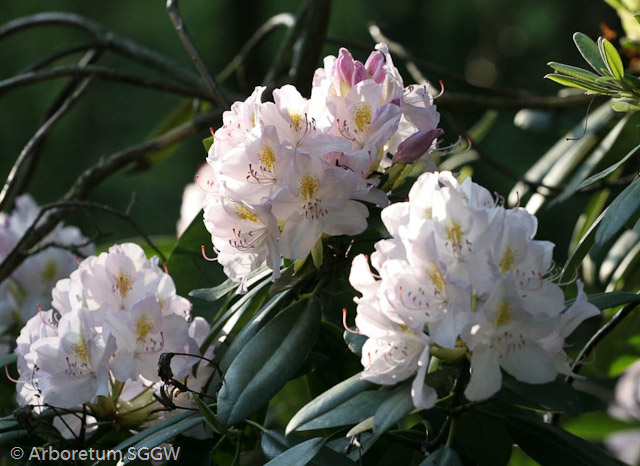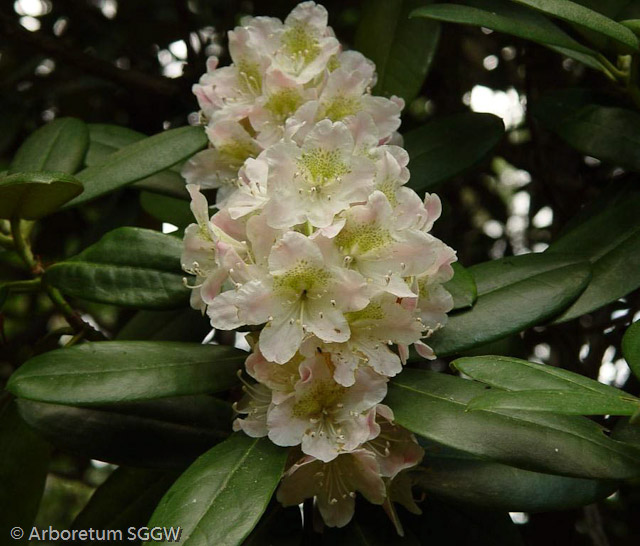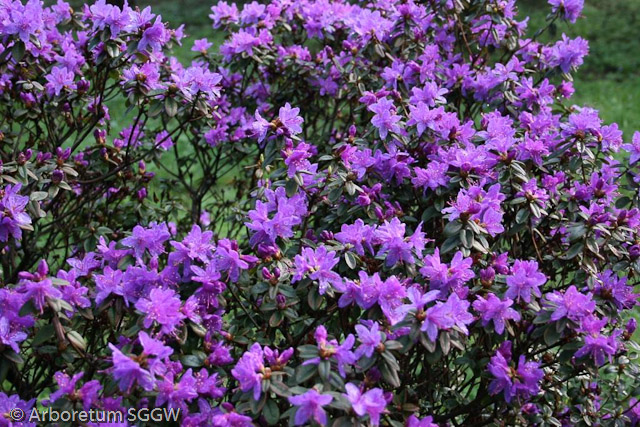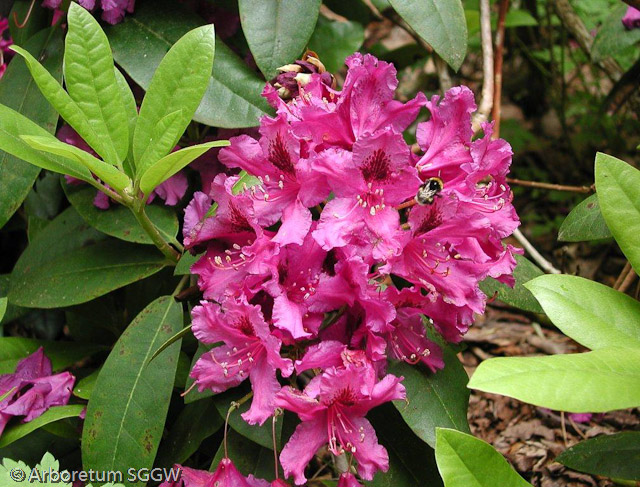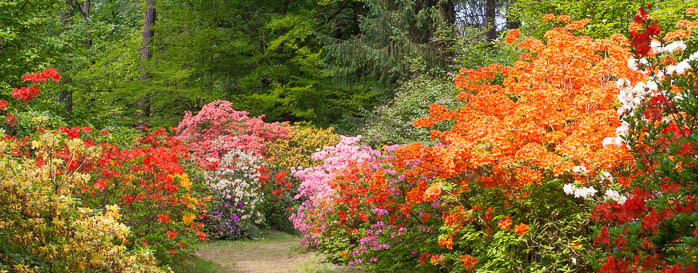Views: 304
Dendrological
collection
Tourist's essentials
Dendrological collection
This is the Arboretum's fundamental, and largest, plant collection. It encompasses trees, shrubs and subshrubs growing outdoors in the garden, both alone and in groups. The collection is universal in character. The majority of plant genera and species which are able to grow in the climate zone of the Arboretum have been, and continue to be, introduced into cultivation. In recent years, particular attention has been paid to obtaining new plants from natural populations and it is these which currently form the distinct majority of plants introduced. Natural taxa also have priority over cultivars. These constitute around 35% of the taxa being cultivated.
Last modified: December, 2025:
Number of taxa: 3367,
Number of provenances: 5428,
Number of specimens: 33818.
The Arboretum's present dendrological collections number among the largest and most valuable in Poland. The garden's expanse allows for multiple cultivation of most taxa, giving a considerable variety and number of specimens originating from both the wild and garden origin. This offers a unique opportunity for the observation of, and research into, the plant population; moreover, it provides more than one specimen for the purpose, unlike many other botanical gardens and arboreta. It also permits for the better setting of seed. Several specimens of individual species are frequently planted in a variety of light and soil conditions, for the purpose of observing the differing reactions brought about by the diversity of habitats. The collections are situated on forest land, in a fertile, but acidic, luvic soil and are shielded by the tall pines, oaks, hornbeams and other trees among which they stand. These conditions determine the selection of species for the collections, among which, shade tolerant, acidophilic, forest species predominate. Xerophytic and sun-loving species are represented in smaller numbers, along with those preferring other soil conditions. The collections are planted in an ecological layout, namely, in line with their requirements as regards insulation, protection from the wind, humidity, soil type and so forth. They are not divided in accordance with geographical, systematic, morphological, or any other such criteria.
Within the overall framework of the dendrological collection, the Arboretum specialises, in particular, in several plant groups:
conifers - botanical taxa
Conifers number among the world's most important plant groups, in economic terms and, in all likelihood, are only surpassed in this by edible plants. They are the most important source of wood in our climate zone and, in this regard, they are of enormous significance to Polish forestry.
It was this, as well as their plentiful decorative qualities, which led to the establishing of this specialised collection. Coniferous trees and shrubs have the longest history of collection by the Arboretum. The emphasis is laid on natural taxa; however, there are also large numbers of cultivars, given the multiplicity currently available commercially.
At present, the conifer collection numbers 415 taxa, belonging to 33 genera and including 209 natural taxa. The most prolifically represented are the species of Pinus, Picea and Abies, while the greatest number of cultivars are found among Chamaecyparis, Thuja, Juniperus and Taxus.
Numerous endeavours are focussed upon the cultivation of rare species not fully resistant to our winter conditions, as well as of species whose frost-resistance is not, as yet, known. Among those which should be mentioned here are Calocedrus decurrens, Cephalotaxus, Cryptomeria japonica, Cunninghamia lanceolata, Cupressus bakeri, Podocarpus nivalis, Pseudolarix amabilis and Torreya. Many of the plants, for instance, Microbiota decussata, Podocarpus nivalis, Cupressus bakeri and Cunninghamia lanceolata, were, in fact, first introduced into cultivation in Poland by the Rogów Arboretum.
Genus Acer L. - National Collection
The Rogów Arboretum houses a National Collection of maples, comprising more than 180 taxa. This represents well nigh every species which is able to grow in the climatic conditions of Central Poland. It is the largest collection in Poland and one of the most interesting collections in Europe. It includes some extremely rare and threatened with extinction species as: Acer pauciflorum, A. tsinglingense, A. miaotaiense, A. pycnanthum, A. sinopurpurascens, A. tenellum and many more. Many of those taxa were introduced here as first representatives to Europe and some of them grow today as one of very few or even the only specimens in the continent. Rogów Arboretum is also an active member of The Maple Society.
Genus Acer belongs to the Sapindaceae family, to which the monotypic genus, Dipteronia, also present in the Arboretum, belongs as well. To date, more than 124 species of maple have been described; these are divided into 16 sections, 95 subspecies, 8 varieties and one form.
In the Northern hemisphere, maples grow in the North American temperate zone, Europe and Asia including Asia's South-Eastern tropical zone.
In Poland, we have three indigenous species of maple; A. platanoides, A. pseudoplatanus and A. campestre, as well as two naturalised North American species, namely, A. negundo and A. saccharinum.
Maples are a highly diversified plant group. Some of them will reach a height of several dozen metres, others are smallish, spreading shrubs, while others again are reminiscent of bonsai. They can be found in woods and they are frequently planted in parks and home gardens. It is often the case that they draw no attention to themselves until autumn comes. Then, before the first ground frosts appear, the maples' pedate leaves start to become tinted with hues of gold, orange, red, deep crimson and even brown.
Naturally, the leaves are not the only asset held by these trees. Among this genus, so rich in species, there also occur those with fascinating inflorescence, such as A. spicatum), fruit (A. diabolicum), bark and habit. In the Rogów Arboretum, it is possible to see A. griseum, which originates from China. Its trunk is covered in a cinnamon bark, which peels away in paper-thin layers, exfoliating to spectacular effect and drawing the eye of visitors from afar. Acer griseum also looks glorious in the winter, despite the fact that it is not an evergreen. However, it is at just that time of year that its bark takes on an even more intensive hue and makes a beautiful display.
A. pensylvanicum, A. tegmentosum, and A. davidii also have highly fascinating, striped bark.
A. saccharum, the Sugar Maple, also grows in the Arboretum. This is the tree that gives us the very sweet and sticky maple sap which is then made into syrup and sugar. The sap is tapped from the trunk in the early spring; at the same time, the weather is crucial. Warm sunny days and frosty nights are the most favourable, since these are the conditions which produce sap of the highest quality. For the First Nations of North America, it was a staple food, which is what lay behind the frequent inter-tribal battles over maple forests.
They also lived on other parts of these trees, making flour from the cambium of A. saccharum, A. saccharinum and A. rubrum, for instance. The Blackfoot used the dried and powdered leaves as a flavouring for meat. In Europe, sap is drawn from A. platanoides, the Norway Maple. The young, green seeds came in handy for marinades, even though they were said to be bitter. Children chewed with delight upon the unripened samara, the winged seeds of A. pseudoplatanus, the Sycamore Maple.
Dendroflora of China
China, the world's third most floristically abundant country, after Brazil and Columbia, and has around 30,000 species of vascular plants, belonging to 353 families and 3,184 genera. This encompasses 12% of the world's plant resources. At the same time, it is the only country this rich in plant life where a large part of its lands lie within a temperate climate zone.
China's territory encompasses boreal, temperate, as well as sub-tropical and tropical forest zones. They permeate one another, coming up against no great obstacles in the form of mountain chains or seas, a phenomenon which is not evident anywhere else in in the world. Meanwhile, the topographical and climatic diversity of the country's individual regions allows the existence of an extraordinary variety of habitats, where species found occur nowhere else. It is estimated that 56% of plant genera occurring in China are endemic; in other words, they occur nowhere apart from China. A great many of these, known in Europe and America as long-extinct, grow in China to this very day.
On the other hand, China is a country with an uncommonly high population density. A significant part of the natural plant community was transformed into agricultural land, as a result of which, a multitude of valuable and rare plant species were irretrievably lost. Many more will come under threat within the space of the next few years. Estimates suggest that around 3,000 endemic species are in danger of extinction. At the same time, the most fascinating areas, in botanical terms, are located in the country's less accessible and poorest regions. Numerous species have only recently been discovered and it is certain that many more are still awaiting discovery. It is for this reason that the study and examination of China's plant life is so crucial and urgent a task.
The Arboretum's collection of Chinese trees and shrubs began to develop in the 1980's, when China opened up somewhat more to the world and a wider exchange of plant material became possible with the country's botanical gardens. Currently, the Arboretum's collection holds around 500 taxa of trees and shrubs native to China with the ability to winter in Poland. Some newly discovered or rare species, about which little is known, were introduced into Poland for the first time by the Arboretum.
Some, such as Sinocalycanthus chinensis, Euonymus macropterus, Heptacodium miconioides and Symplocos paniculata, have turned out to be highly ornamental. Financial constraints mean that obtaining new species, primarily from natural sites, takes place almost exclusively through seed exchange with other botanical gardens. These plants are currently the object of intense scrutiny as regards their adaptation to the Polish climate, their health, and population variability.
Genus Stewartia L. - National Collection
Genus Stewartia belongs to the Theaceae family. To date, more than 20 species of this plant have been listed. In the main, they grow in Japan, Korea, China, Laos, Vietnam and Thailand, with only a few occurring the eastern part of North America. Around 6 deciduous species can be cultivated in the Polish climate.
There are 5 species, 1 variety and 1 cultivar in the Rogów Arboretum:
- Stewartia monadelpha Siebold & Zucc.
- S. pseudocamellia Maxim.
- S. pseudocamellia Maxim. 'Rogów'
- S. pseudocamellia Maxim. var. koreana (Nakai) Sealy
- S. rostrata Spongberg
- S. serrata Maxim.
- S. sinensis Rehder & E. H. Wilson
Stewartia is a genus of shrubs or smallish trees with cup-shaped, single, white or cream-coloured flowers reminiscent of camellia flowers. The flowers are somewhat short-lived, but they bloom in succession, so the entire flowering season spans several weeks. The most ornamental species is Stewartia pseudocamellia. Its flowers reach 7cm in diameter and remain in bloom on the plant for a relatively long time. This species also boasts glorious leaves in autumn, light-red in hue, and a novel bark, which it sheds and which is reminiscent of that of the Plane Tree. It is fairly rare to encounter S. serrata in Poland, as it grows in no more than a few gardens. In Rogów, over a dozen specimens can be seen. The flowers are just as beautiful and large as those of S. pseudocamellia; however, the bark is not as ornamental. In Poland, S. rostrata is the most rarely cultivated of the species. Its large flowers are similar to those of S. pseudocamellia, and S. serrata. However, the lower part of the petals are red, while the bracts and sepals are a reddish purple. The least ornamental is S. monadelpha. Susceptible to frost, during a severe winter in Central Poland it will very often freeze as low as to the snow's surface.
Family Araliaceae - National Collection
The Araliaceae family encompasses 50 genera, within which there are 1,412 species of herbaceous and woody plants, these being climbers, subshrubs, shrubs and trees. Their leaves are either simple or compound. In some species of aralia, the featherlike, pinnate compound leaves can reach a length of 1.5 metres! The tiny flowers, which are, more often than not, white, are clustered in basketlike, spherical panicles or racemes and it gives a tiny, shining, stone-bearing fruit. They are most often cultivated for their leaf display.
The majority of plants in this family occur in the tropical zones of both hemispheres, (in Indonesia, Malaysia and America) and are more rarely encountered in a temperate climate. Some species are cultivated as house plants.
Representatives of the following genera of this family can be seen at the Rogów:
Aralia
Eleutherococcus (formerly Acanthopanax)
Hedera
Kalopanax
Oplopanax
Genus Aralia
5 species grow in the Rogów Arboretum:
Aralia chinensis
Native to China, from Manchuria to the provinces of Yunnan and Sichuan, this slow-growing tree species differs from other aralia in its late flowering period, which occurs in September, or even in October. The shoots are very slightly spiny. At times, it can suffer from frost damage.
Aralia elata
This is the most popular species of aralia for cultivation. Typically, it occurs in China. In Poland, the species is fully frost-resistant. It can grow to a height of 7 metres and, being self-seeding, spreads very profusely.
Aralia elata var. glabrescens (=var. mandshurica)
This variety is very similar to the typical species, differing only in its glabrous leaves beneath, and in longer stipules. It ranges across China, Korea, Eastern Russia and Japan.
Aralia nudicaulis
Occurring in Canada to the USA, from Newfoundland to Manitoba, the Carolinas and Missouri, it is a suffrutex, with thornless, woody shoots that trail to the ground. In Poland, it is fully frost-resistant.
Aralia spinosa
Found in the north-eastern and southern USA, from New York to Florida and Texas, this is a shrub which grows to a height of barely 4 metres, with a less intensive growth rate than that of the Asian species.
Aralia stipulata
Rarely encountered in collections, this species grows into a smallish tree of no more than a few metres in height. It is distinguished by the distinct stipules at the base of its leaf stalks. The shoots are very slightly thorny and its yellow-tinted flowers bloom in August.
Aralia cordata
Growing on Sakhalin, as well as in Japan, Taiwan and China, this is a perennial species.
Genus Eleutherococcus
There are 13 species and two varieties growing in the Rogów Arboretum:
Eleutherococcus divaricatus
a species occuring from Japan to Central and Eastern China;
Eleutherococcus divaricatus var. chiisanensis
native to the Korean Peninsula, as well as to Japan and China;
Eleutherococcus giraldii
occurs in China;
Eleutherococcus henryi
occurs in Southern China;
Eleutherococcus lasiogyne
native to Tibet and China's Sichuan Province;
Eleutherococcus leucorrhizus
occurs in China;
Eleutherococcus nodiflorus
occurs in China and North Vietnam;
Eleutherococcus senticosus
occurs in the Far East and in China, Korea and Japan;
Eleutherococcus sessiliflorus
occurs in the Far East and in China, Korea and Japan;
Eleutherococcus setchuenensis
occurs in China;
Eleutherococcus sieboldianus
occurs in China's Anhui Province;
Eleutherococcus sieboldianus 'Variegatus'
occurs in the Far East and in China, Korea and Japan;
Eleutherococcus simonii
occurs in Central China, in the Hubei Province;
Eleutherococcus stenophyllus
occurs in China, in the Ningxia and Shaanxi Provinces;
Eleutherococcus wardii
occurs in Tibet and in China, in the Sichuan and Yunnan provinces.
Genus Hedera
1 species grows in the Rogów Arboretum, with 18 varieties of that species represented:
Hedera helix
grows in Europe, from Scandinavia to the Mediterranean Basin and from the Caucasus to Asia Minor. An evergreenclimber, growing to a height of 30 metres, its fragrant, green-hued flower heads open in the autumn and, in the spring of the following year, ripen into a poisonous, black fruit.
Genus Kalopanax
1 species grows in the Rogów Arboretum, with one variety:
Kalopanax septemlobus
occurring in China, Eastern Siberia, Korea and Japan. The oldest and largest example of this species in Poland can be seen in our garden. At 78 years old, measured at a height of 1m from the ground, it had attained a circumference of 98cm and it is 21 m tall.
Kalopanax septemlobus var. maximowiczii
grows in China and Japan. The largest specimen in the Arboretum is 76 years old, 37cm diameter at breast height and 14m tall.
Genus Oplopanax
1 species grows in the Rogów Arboretum:
Oplopanax horridus
occurs in North America, from Alaska to California. This shrub, growing to a height and width of 2m and flowering and fruiting annually. It is susceptible to late frosts and therefore it is the best indicator of late frosts in the Arboretum!
The plants of the aralia family are prized not only for their ornamental qualities, but also for their medicinal properties. The most popular species is ginseng. Its Latin name is Panax ginseng, which means 'panacea', in other words, a remedy for all ills. In Chinese, 'gin - seng' means 'root - human' and the root of this plant does, indeed, have a humanlike shape to it.
The root of the ginseng contains around 200 substances which are good for us. The most significant are ginsenosides, thanks to which, energy levels rise, as does the system's capacity for both physical and mental exertion. Ginsenosides also stimulates the immune system, leading to an increased resistance to bacterial and viral infections and a faster recovery from illness. Ginseng has a beneficial effect on the functioning of the internal secreting organs, it stimulates the heart, is anti-thrombotic, regulates blood sugar levels and reduces cholesterol levels.
Ginseng is recommended for older people, among others. Taken regularly, it has an impact on their physical and mental fitness, slowing down the body's ageing process, alleviating menopausal and andropausal symptoms and thus enabling people to maintain an active lifestyle into their advanced years.
Ginseng-root extract is also used in cosmetics as a preparation for rejuvenating the skin and in treatments to ward off baldness and hair loss.
Other plants of this family have properties similar to those of ginseng.
Taking extract of Aralia, Eleutherococcus and Oplopanax root increases the system's general functioning and capacity for adaptation, improving its resistance to increased physical and mental effort and reducing susceptibility to stress. In addition, it acts on the smooth muscles as a relaxant, tones up the cardiovascular system and stabilises blood pressure.
Alcohol extracts and extracts in tablet form, are helpful during a state of mild depression, low blood pressure and reduced debilitation and decreased system immunity.
Furthermore, the extract of Aralia roots is used in manufacturing Aralman, a soft drink which acts rather like Coca-Cola.
Genus Sorbus L.
Genus Sorbus belongs to the Rosaceae family, sub-family Pomoideae. Around 100 species occur in the Northern hemisphere, with six species of rowan growing in Poland. They are S. aucuparia, the most common of the rowans, growing in coniferous, oak and beech forests; S. intermedia, a protected species, growing in the Pomeranian region; S. torminalis, a protected species, growing in Western Poland; S. aria, occurring in the Tatra and Pieniny Mountains; S. chamaemespilus; and S. graeca, growing in the Pieniny Mountains.
Among the rowans, trees and shrubs with simple leaves, either serrated or lobed, can be encountered, as can those with pinnate compound leaves. The flowers are most often inconspicuous, clustered in corymbs. The fruits, however, which are pomes, are highly ornamental, displaying in reds, oranges, yellows, browns, and sometimes even white.
Among the rowans, trees and shrubs with simple leaves, either serrated or lobed, can be encountered, as can those with pinnate compound leaves. The flowers are most often inconspicuous, clustered in corymbs. The fruits, however, which are pomes, are highly ornamental, displaying in reds, oranges, yellows, browns and, sometimes, white, as well.
Among the 75 taxa of these plants which can be seen in the Rogów Arboretum are:
the European rowans: S. aria, S. aucuparia, S. chamaemespilus, S. domestica, S. graeca, S. hybrida, S. intermedia, S. latifolia, S. obtusifolia, S. torminalis, and S. umbellata, including the Scandinavian rowans: S. rupicola and S. subsimilis;
and the alpine rowans: S. x hostii and S. mougeotii;
the North American rowans: S. americana, S. decora, S. scopulina and S. sitchensis;
from Asia Minor, the rowans: S. aucuparia, S. domestica, S. torminalis and S. umbellata;
the Chinese rowans: S. alnifolia , S. koehneana, S. megalocarpa, S. scalaris, S. pohushanensis, S. poterifolia, S. pratti, S. scalaris, S. vilmorinii and S. zahlbruckneri;
the Japanese rowans: S. alnifolia, S. commixta, S. gracilis, S. serotina;
the Himalayan rowan: S. cashmiriana;
and, from North Africa: S. domestica and S. torminalis.
The fruit of some species is delicious and a variety of products are often made with it, including jams, preserves, marinades and in Poland for flavouring vodka. Reputedly, the most delicious is the fruit of the rowans with simple leaves, such as the Swedish whitebeam and the Whitebeam. Fruit with a slight bitterness to it is best tried after freezing or, alternatively, blanching. It can also be soaked in water and vinegar for 24 hours, or infused for a few moments in hot water. In India, the fruit of the rowan needs to have rotted before anyone will be willing to eat it. In Poland, during times of famine, the peasants would gather the really rather bitter fruit of S. torminalis, the Wild Service Tree, dry it and then make a flour, from which they would bake bread. The people of China followed a similar course with the S. cashmiriana species, the Kashmir Rowan.


